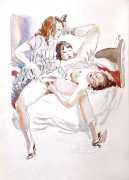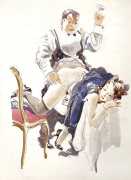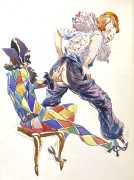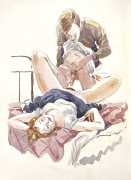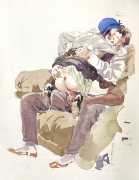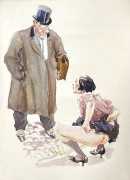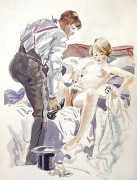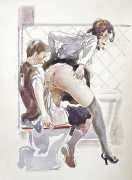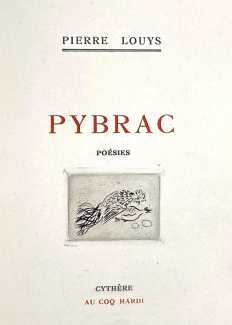 Like the rest of Pierre Louÿs’ voluminous output of erotica, Pybrac was not published during his lifetime, but instead figured among the many secret manuscripts discovered after his death, tucked and filed away, and subsequently auctioned off and scattered among collectors. It would see its first clandestine publication in 1927, two years after the author’s death.
Like the rest of Pierre Louÿs’ voluminous output of erotica, Pybrac was not published during his lifetime, but instead figured among the many secret manuscripts discovered after his death, tucked and filed away, and subsequently auctioned off and scattered among collectors. It would see its first clandestine publication in 1927, two years after the author’s death.
The title is derived from the name of Guy Du Faur, Seigneur de Pibrac, French jurist, poet, and chancellor to Marguerite of France, Queen of Navarre, who notoriously rejected his attempts at wooing her. That fact, combined with Pibrac’s reportedly upright character (Montaigne said of him, on his death: ‘Good Monsieur de Pibrac, whom we have just lost, such a noble mind, such sound opinions, such a gentle character!’), undoubtedly contributed to Louÿs’ decision to employ a deformation of his name as the title to this collection. The mockery extends to the format and tenor of the poems, though, as Pibrac is best remembered for his own collection of poems, a set of 126 moralistic quatrains, which throughout its endless printings bestowed good advice and guidelines to proper conduct upon many generations of French youth up until the nineteenth century. For the full background to Louÿs’ scandalous reinterpretation of Pibrac’s verse form, the introduction to Geoffrey Longnecker’s English translation can be found here.
Rojankovsky’s ten illustrations show him at the height of his erotic skills, both in technique and imagination. His ability to portray explicit intimate scenes with the minimum of colour and detail is unsurpassed, and his light touch of wit adds to the pleasure.
This edition of Pybrac was published by the well-known erotica publisher René Bonnel, under the imprint Au Coq Hardi (The Bold Rooster) in ‘Cythère’, the Greek island of Cythera, but actually of course Paris. The edition was limited to 105 numbered copies; this unique copy, number 28, was enhanced with ten original watercolours by Rojan. At least two other copies are known to be accompanied by Rojan watercolours.
We are very grateful to Alexander Varshavsky from California for this set of images. The Varshavsky Collection website can be found here.


